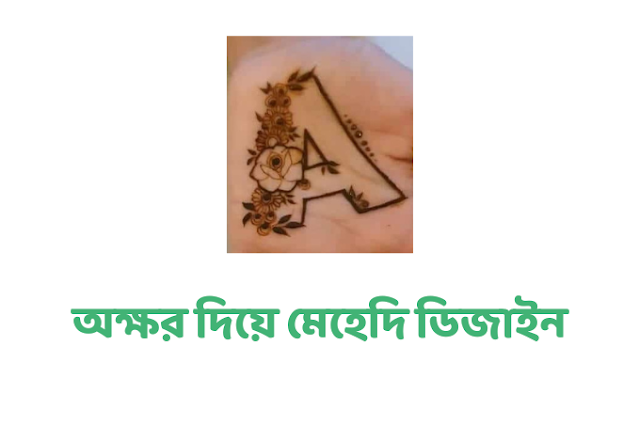Symptoms of blood cancer in women Ways to get rid of blood cancer
Hello dear guest - Welcome to Neoteric IT . You have come to Neoteric IT for information about Symptoms of blood cancer in women Ways to get rid of blood cancer Today I will conclude this article by discussing Symptoms of blood cancer in women Ways to get rid of blood cancer in detail. Search Google to know more about Symptoms of blood cancer in women Ways to get rid of blood cancer write Symptoms of blood cancer in women Ways to get rid of blood cancer or click here insightflowblog.com for visit. See the page Table of content for know the main topic of this article. Web story and AMP Version
Cancer is a term used to describe a group of diseases involving the uncontrolled growth of abnormal cells in the body. Blood cancer, also known as leukemia, is a type of cancer that affects the blood and bone marrow. It is a common type of cancer that affects both men and women, but there are some symptoms that are more common in women.
Symptoms of blood cancer in women can vary depending on the type and stage of the cancer. In general, symptoms of blood cancer include:
Fatigue: Women with blood cancer may feel tired or weak all the time, even after adequate rest. This is because cancer cells reduce the amount of oxygen-carrying red blood cells in the body, which can cause fatigue.
Fever: Women with blood cancer may experience a fever that does not go away after treatment. Because cancer cells secrete chemicals that increase body temperature.
Weight loss: Women with blood cancer may experience unexpected weight loss, even though they are eating well. This is because cancer cells use energy and nutrients from the body, resulting in weight loss.
Shortness of breath: Women with blood cancer may experience shortness of breath, even during normal activities like walking up the stairs. Because cancer cells can invade the lungs and reduce lung function.
Easy bruising and bleeding: Women with blood cancer may experience easy bruising and bleeding, such as nosebleeds or bleeding gums. This is because cancer cells can reduce the number of platelets in the blood, which are needed for clotting.
Enlarged lymph nodes: Women with blood cancer may have enlarged lymph nodes, which are located throughout the body. The lymph nodes may be swollen and painful to the touch.
Bone pain: Women with blood cancer may experience bone pain, especially in the back, hips and sternum. This is because cancer cells can invade the bone marrow and cause pain.
Skin rash: Women with blood cancer may develop a red or purple skin rash, which is caused by abnormal growth of blood vessels in the skin.
Abdominal pain: Women with blood cancer may experience abdominal pain, which may be due to an enlarged spleen or liver.
Headaches: Women with blood cancer may experience headaches that do not go away even after taking pain medication. Because cancer cells can enter the brain and put pressure on the nerves.
If you experience any of these symptoms, it is important to see a doctor for a proper diagnosis. Blood cancer can be difficult to diagnose because the symptoms are similar to those of other illnesses. Your doctor may perform a physical exam, blood tests, and imaging tests to determine if you have blood cancer.
There are different types of blood cancer, including:
Acute lymphoblastic leukemia (ALL): This is a type of blood cancer that affects white blood cells called lymphocytes. It is more common in children than adults.
Acute myeloid leukemia (AML): This is a type of blood cancer that affects white blood cells known as myeloid cells. It is more common in adults than in children.
Chronic lymphocytic leukemia (CLL): This is a type of blood cancer that affects white blood cells called B-lymphocytes. It is more common in older adults.
Chronic myeloid leukemia (CML): This is a type of blood cancer that affects white blood cells known as myeloid cells. It is more common in adults than in children.
Hodgkin lymphoma: This is a type of blood cancer that affects lymphocytes. It is more common in young adults.
Non-Hodgkin lymphoma: This is a type of blood cancer that affects lymphocytes. It is more common in older adults.
Treatment for blood cancer depends on the type and stage of the cancer, as well as the patient's overall health. Some common treatments include chemotherapy, radiation therapy, and bone marrow transplant.
Ways to get rid of blood cancer
Cancer is a group of diseases in which abnormal cells grow uncontrollably, invade nearby tissues and organs, and spread to other parts of the body through the bloodstream or lymphatic system. Blood cancer, also known as hematologic cancer, occurs when abnormal growth of blood cells occurs in the bone marrow, lymphatic system, or other parts of the body.
Blood cancer can affect anyone regardless of age, gender or race. According to the American Cancer Society, an estimated 60,530 people will be diagnosed with leukemia, lymphoma, or myeloma in 2021, and 23,100 people are expected to die from the disease. Although blood cancer is a complex disease that can be difficult to treat, there are many ways to manage and even cure it. In this article, we will discuss some ways to get rid of blood cancer.
chemotherapy
Chemotherapy is one of the most common treatments for blood cancer. This treatment involves the use of drugs to kill cancer cells or stop their growth. Medicines are usually administered intravenously or taken orally. Chemotherapy may be given alone or in combination with other treatments such as radiation therapy or stem cell transplantation.
Chemotherapy has several side effects such as nausea, vomiting, hair loss, fatigue and increased risk of infection. However, newer chemotherapy drugs have fewer side effects and are more effective than older drugs.
Radiation therapy
Radiation therapy uses high-energy beams such as X-rays or protons to kill cancer cells. This treatment is usually given externally, where a machine outside the body delivers radiation to the affected area. However, in some cases, radioactive material can be implanted directly into the tumor and irradiated internally. Radiation therapy may be used alone or in combination with chemotherapy or stem cell transplantation.
Radiation therapy has some side effects such as skin irritation, fatigue and increased risk of infection. However, newer radiation techniques such as intensity-modulated radiation therapy (IMRT) and proton therapy have fewer side effects and are more specific in targeting cancer cells.
Stem cell transplantation
Stem cell transplantation is a procedure in which healthy stem cells are introduced into a patient's bloodstream to replace infected or diseased cells. This treatment can be used to treat many types of blood cancers, including leukemia, lymphoma, and multiple myeloma. There are two types of stem cell transplantation: autologous and allogeneic.
Autologous stem cell transplantation uses the patient's own stem cells, while allogeneic stem cell transplantation uses stem cells from a donor. Allogeneic stem cell transplantation carries a high risk of complications and requires a suitable donor match.
Immunotherapy
Immunotherapy is a relatively new treatment for blood cancer that uses the body's immune system to fight cancer cells. This treatment involves the use of drugs that stimulate the immune system to recognize and attack cancer cells. Immunotherapy can be used alone or in combination with chemotherapy or radiation therapy.
Immunotherapy has some side effects such as fever, chills, fatigue and increased risk of infection. However, newer immunotherapy drugs such as checkpoint inhibitors and CAR-T cell therapy have proven to be highly effective in treating blood cancers.
Targeted therapy
Targeted therapy is a type of treatment that targets specific genes, proteins or other molecules that contribute to the growth and survival of cancer cells. This treatment is usually given orally or through an IV. Targeted therapy can be used alone or in combination with other treatments such as chemotherapy or immunotherapy.
Targeted therapy has fewer side effects than chemotherapy and radiation therapy. However, targeted therapy may not work for all patients with blood cancer, and some patients may develop resistance to treatment over time.
Lifestyle changes
In addition to treatment, lifestyle changes can help manage blood cancers and improve a patient's overall health. These changes include:
- Eating a balanced diet that includes fruits, vegetables, whole grains and lean protein
- Engaging in regular physical activity such as walking, jogging or yoga
- Adequate rest and sleep
- Managing stress through techniques such as meditation and deep breathing
- Avoiding tobacco and excessive alcohol consumption.
Conclusion
Blood cancer is a complex disease that requires a multifaceted approach to treatment. Chemotherapy, radiation therapy, stem cell transplantation, immunotherapy, targeted therapy, and lifestyle changes are some of the ways to manage and get rid of blood cancer. Patients with blood cancer should work closely with their healthcare team to determine the most appropriate treatment plan based on their individual needs and preferences.
Thanks for read the post. You can also read the article in bangla - blood-cancer
You are indeed a valued reader of Neoteric IT. Thank you so much for reading Symptoms of blood cancer in women Ways to get rid of blood cancer article. Please let us know how you feel after reading this article.

 Follow Google News to get the latest Neoteric IT news
Follow Google News to get the latest Neoteric IT news 
.png)





Please comment in accordance with the policy - otherwise your comments will not be accepted.
comment url